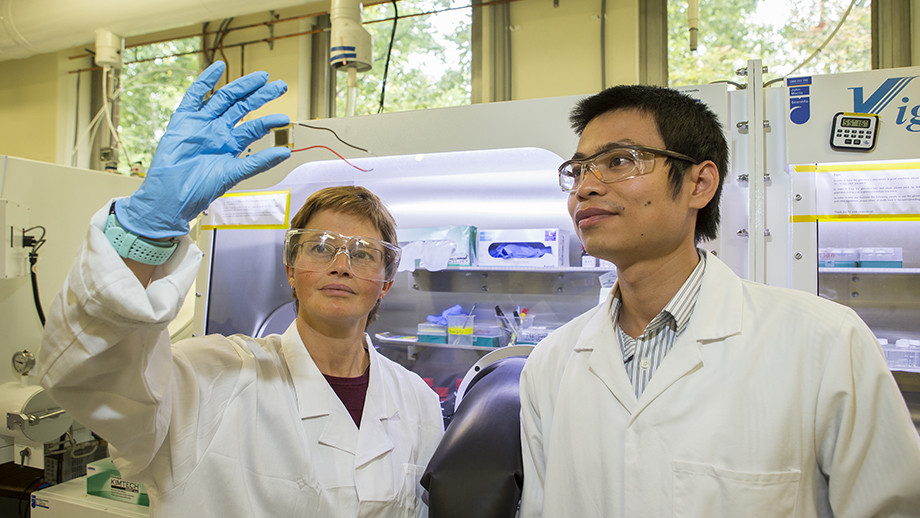New developments in perovskite research are becoming a regular theme in solar. Companies, universities and institutes the world over seek innovative ways to convert the material’s high potential for efficiency into something commercially viable, which could be a big step forward for the industry.
Australia National University is the latest to bring its development to the public’s attention, having achieved a record breaking 26.4% efficiency through mechanically combining perovskite cells with upto 17.4% efficiency in a stacked configuration with silicon solar cells.
“Until now, efficiencies of this kind have only been achieved using high cost materials normally used on satellites,” said The Duong, who led the research team from ANU’s Research School of Engineering. “We are now a step closer to a low-cost alternative.”
Much of the research into perovskites is split between using the material in combination with silicon solar cells to boost efficiency, and creating solar cells entirely from perovskites. Earlier this week, a team from Ulsan Institute of Science and Technology in Korea (UNIST) announced the development of a processing method which can produce perovskite cells with 21.2% efficiency.
Popular content
One of the main barriers to the commercialization of perovskites has been their stability, a challenge which is acknowledged by ANU Professor Kylie Catchpole. “This breakthrough opens the way to increasing the efficiency of silicon solar cells further, and in a cheap way,” says Catchpole. “The key challenge now is achieving the same stability as we have with silicon solar cells that can be put out on a roof for 20 years using perovskite.”
UNIST claim to have overcome this challenge, having produced a cell that retained 93% of its initial performance after 1,000 hours of light exposure.
While these developments are encouraging for the use of perovskite in the next generation of PV cells, it should be noted that many of the record breaking cells being produced in lab conditions are far smaller than production level solar cells – ANU’s latest cell measures 0.18cm². Australia’s University of New South Wales set the current record of 12% efficiency for a ‘full size’ 16cm² solar cell in December 2016.
This content is protected by copyright and may not be reused. If you want to cooperate with us and would like to reuse some of our content, please contact: editors@pv-magazine.com.



My guess is that with plain poly cells at 20% efficiency and mono at 23%, that of a stacked tandem cell would gave to be close to 30% for the extra manufacturing cost to be worthwhile. Still, stability remains the most important challenge, as short life is a complete killer for commercial perovskite cells: 25 years or no dice.
Solar arc fault fires like in Bakersfield California are a rising concern. The 2019 US National Electric Code has increased the requirements to provide mitigateion. Will this higher efficiency increase the risk of DC arc faults?